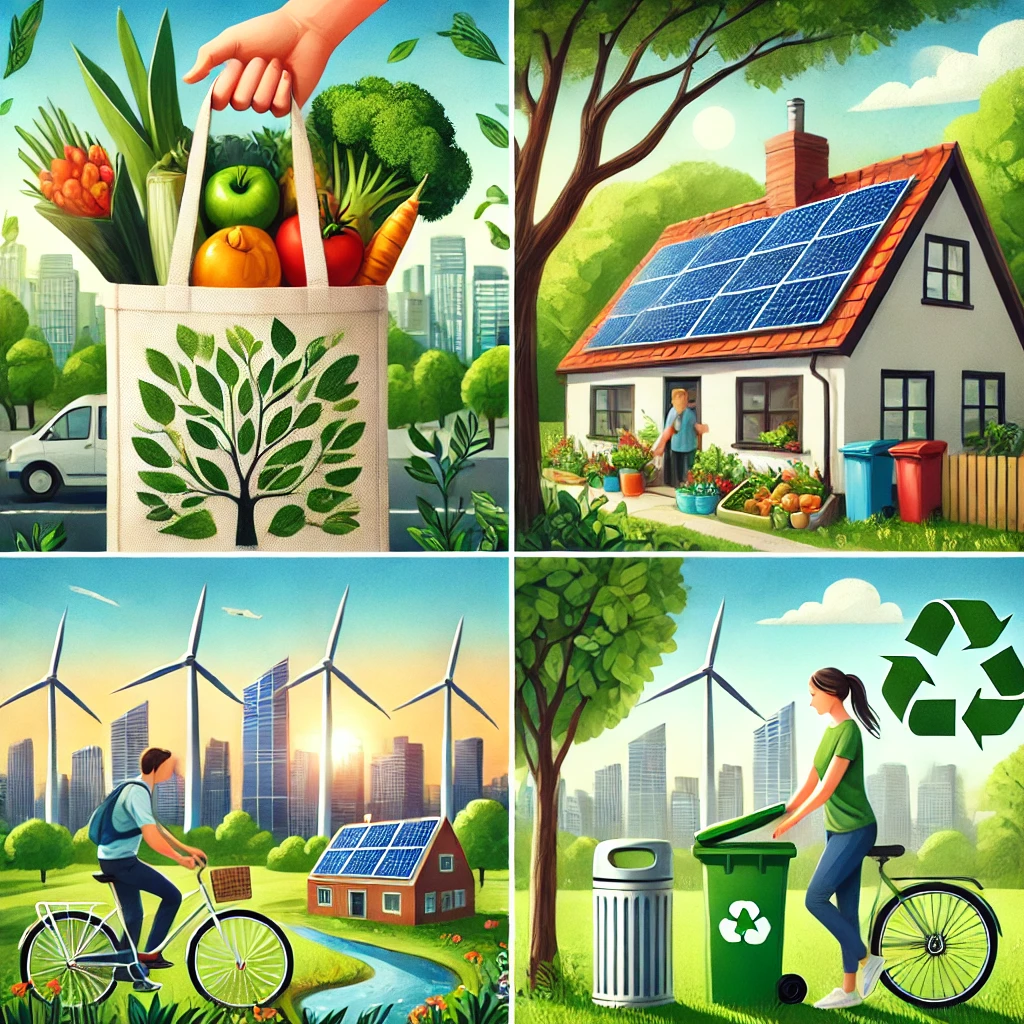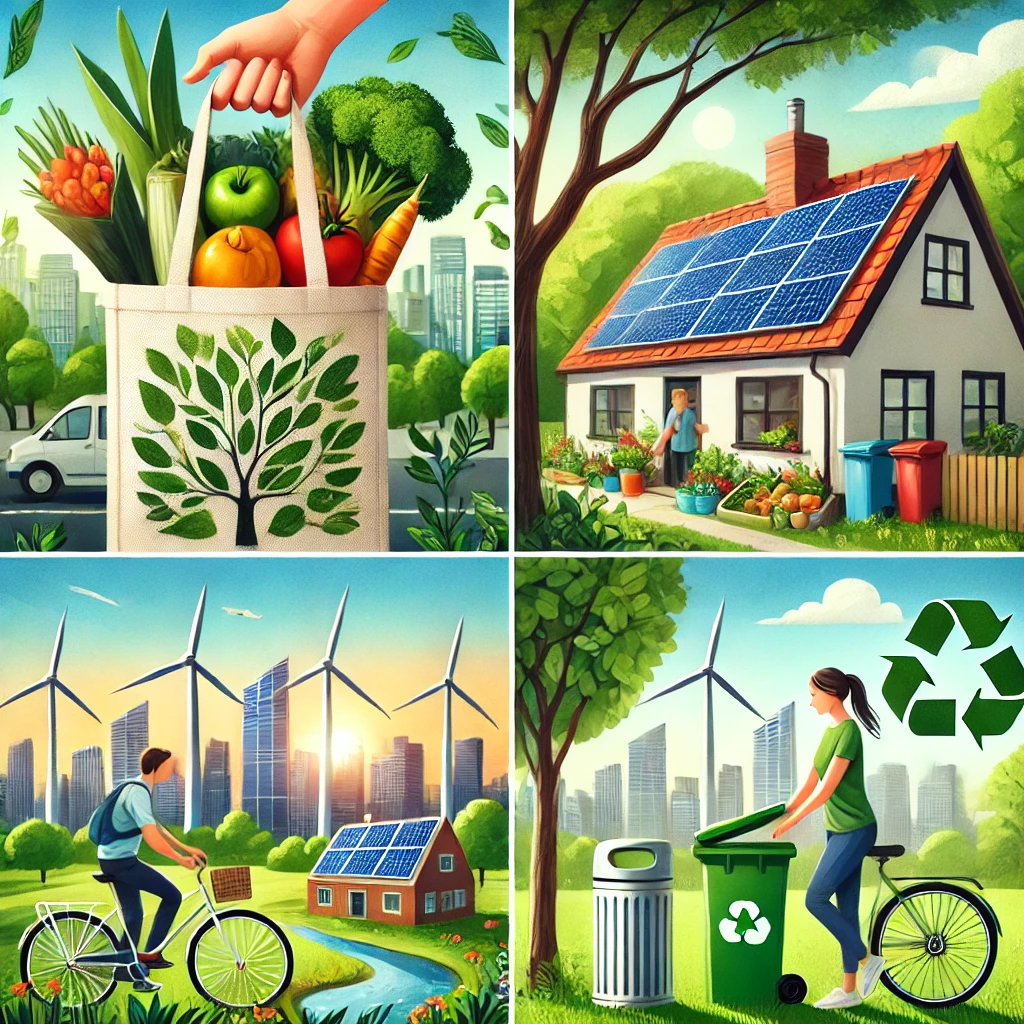Sustainable living comes into play with growing climate change, environmental degradation, and resource depletion, sustainability is that catchword that resonates well in the minds of increasing populations all over the globe.
It is no longer a buzzword but a much-needed shift in the ways we live, work, and engage with our planet. Sustainable living can include anything from what we eat and energy consumption to how we transport ourselves and manage waste.
But this is not only the benefit that sustainable living can bring into life; it further provides to one’s life manifold personal benefits such as good health and saving money for an otherwise meaningful and fulfilling life.
In this article, we will be delving into the reasons why sustainable living is good for the planet and you.
Whether one is a newbie to this idea or already making some choices related to the natural surroundings, there is always something more to discover on how to lead a greener and healthier lifestyle.
As you read through this post, you will come to understand how making simple small changes can indeed lead to big improvements in both your well-being and the world surrounding you.

What is Sustainable Living?
Sustainable living implies a lifestyle that is bound to cause minimal environmental impacts for a person or group, adopting the practice of methods to help preserve natural resources and reduce waste, and the general ecological footprint as much as possible.
It is essentially about living in a manner that satisfies current needs without causing degradation for the following generations to meet theirs.
Examples of sustainable practices include:
Reduce, Reuse, and Recycle: Waste reduction through reusing and recycling is the basis of sustainability. Products like glass bottles or plastic bags are reused, and materials like paper, plastic, and metal are recycled to divert waste from landfills and avoid causing more environmental damage.
Choosing energy-efficient appliances and renewable sources of energy: Energy-efficient appliances, such as LED bulbs, energy-star-rated refrigerators, and washing machines, consume less electricity, which reduces carbon emissions. Choosing renewable sources of energy like solar or wind power instead of using fossil fuels reduces greenhouse gas emissions and reliance on finite resources.
Supporting local and organic agriculture: As this type of farming practice tends to utilize fewer chemicals, preserve water, and enhance the health of the soil, it is significantly more sustainable than industrial agriculture. Supports a smaller, local carbon footprint of food transportation, strengthening and making the local economy more resilient.
Using alternative transportation, such as bicycles, walking, or public transit: Out of all the ways of saving carbon emissions, the most effective one is to reduce dependence on car use. Walking, cycling, or use of public transport results in personal energy savings while lowering air pollution. Alternative ways of transportation enhance physical health while having minimal effects on the environment
Avoid the usage of single-use plastics and Buy Eco-Friendly Products: Single-use plastics are also causing massive environmental damage due to the reason of non-biodegradability and holistic pollution. Consumers can reduce plastic waste only by alternative options, such as metal straws, cloth bags, and glass containers, and by buying products made from sustainable materials.
It results in practices, which lead to a more sustainable lifestyle that both avoids environmental risks and encourages long-term health of the local ecology.
Sustainable living is not about being perfect; it is simply making better choices for our planet and ourselves. It is about little, meaningful changes that get to be added up in the long run with huge ripple effects.
Environmental Benefits of Sustainable Living
Sustainable living helps to reduce some of the negative impacts of climate change, natural resources, and environmental reserves. Every sustainable choice we make directly reduces our carbon footprint while preserving ecosystems.
Reducing Carbon Footprint
Environmental sustainability can be said to primarily benefit greenhouse gas emissions, which is the primary cause of global warming. Thus, you can eradicate one bad habit significantly by switching to energy-efficient appliances using public transportation or switching to renewable sources like solar or wind power.
Small alterations, such as switching from traditional incandescent bulbs to LED bulbs can save up to 80% consumption of energy, and by switching one’s driving to public transport, some tons of CO2 could be saved. Such changes will collectively bring an extraordinary impact on society toward the reduction of global warming.
Natural Resources Conservation
Water, forests, and fossil fuels-our natural resources on the planet are scarce resources that are under pressure due to their increased consumption. Sustainable living pays much attention to the consumption of the same resources appropriately by using water-saving appliances, preventing wastage of water, and using alternative sources of energy such as wind and solar power.
Practices like these can vastly decrease reliance on nonrenewable resources and prevent a constricted future for our children and their children. For example, using energy-efficient technologies and shifting towards solar power reduces the call on an already pressured power grid; using less power reduces the demand on power grids and means there is less need for coal and gas plants significant polluters.
Preservation of Biodiversity
Protection of biodiversity is very basic to the health of the earth’s ecosystems. Sustainable practices such as promoting organic farming and protecting natural habitats help to keep species from going extinct by not annihilating any ecosystem.
Urban greening initiatives, in the form of planting trees and community gardens, beautify the city and create important habitats that can become the crucial cogs of life cycles for wildlife. Besides, choosing food sources that promote minimal agriculture ‘practices’, including locally-grown organic produce, would be a vital move in reducing harmful agricultural practices that have led to habitat loss and soil degradation.
Benefiting the individual and the community
While the environmental benefits of green living are well established, personal and community benefits also abound, such as those that come from embracing a greener lifestyle.
Physical Health Benefits
Living sustainably can greatly enhance physical health. For example, walking or biking instead of driving improves cardiovascular health and reduces air pollution, which in turn reduces the incidence of respiratory diseases.
Well-planned plant-based diets-food that form the core of many sustainable lifestyles-have been strongly associated with lower risks of chronic diseases-heart disease, diabetes, and obesity.
To add to this, sustainable living often involves harmful chemical reduction in household products. Using natural cleaning products and staying away from harming pesticides and fertilizers leads to reduced exposure to toxins which might give one better health in general.
Cost savings
Most people think that sustainable living would cost them a fortune, but it can be their savior in the long run. Energy efficiency can save one’s utility costs. Installing a programmable thermostat, using energy-efficient appliances, and replacing one’s lighting with LED lighting would save hundreds of dollars in electricity per year.
Similarly, the use of durable, quality products instead of disposables may result in less frequent purchases and therefore more savings in the long run. Further, the replacement of a car with public transport or a bicycle can save significantly on transport-related expenses such as fuel, maintenance, and insurance costs.
Encourage a Nurturing Community
Sustainable living is not just for individuals; it can foster community and a sense of responsibility among people. Supporting local farming, frequenting environmentally friendly business establishments, or joining activities such as clean-up drives and community gardening make one an integral part of something much bigger than oneself-a movement that takes care of the environment.
These community developments build awareness of sustainability. This influence impacts other people to be in a more green society. Other than this, it’s improving the local economy while bringing about social ties as well as cooperative action for common objectives.
Steps to Start Living Sustainably
It might sound intimidating, but a sustainable way of life does not need to be. Here are some practical steps to guide you on your journey:
Minimize and Recycle
Waste recycling is one way in which it is possible to reduce the amount of refuse generated through sustainable living, and, ironically, it is one of the easiest things to do.
Start by eliminating single-use plastics from your life and choosing products that come in minimal packaging. This encompasses disposable bags, bottles, and containers. Composting biodegradable waste is another great way to keep organic material away from landfills as well as produce healthy soil for use in gardening.
Renewable energy sources
The transition to renewable energy can seem a daunting task but that need not be the case as there are various ways that consumers can make their shift to renewables easier. Consumers may choose to install a solar panel on their roof or participate in a green energy program with their local utility provider.
Often, tenants will have even greater options because many electricity providers have green options where they generate electricity from renewable sources.
Transport Alternatives
The transport industry has the highest level of carbon emission, hence it is quite important to incorporate eco-friendly options in it. Use public transport or travel with many people at once, like your friends or colleagues. And if you have to drive anyway, then switch to an electric car: it debt-about.
Myths and Misconceptions in Sustainable Living
In this site, there are many benefits to living sustainably. However, there are a couple of myths that are keeping some folks from making the switch. A few common misconceptions include:
Sustainable Living is Expensive
Most people would assume that a sustainable lifestyle is expensive you have to spend money on specialized products or make drastic changes in how you live your life.
While some sustainable choices do indeed run pretty penny at first (solar panels or electric cars, anyone?), many sustainable practices-energy-efficient consumption, recycling, and cutting down on meat consumption relatively cheap or free. These choices can save me a great deal of money in the long run.
My Contributions Won’t Matter
Individual choices don’t matter, or so most people believe. This, of course, is a fallacy, as the smallest sustainable choice you make adds momentum to the moving train. When millions of people consciously decide to waste less, save energy, and buy more sustainable products, the sum is huge.
Sustainable Living FAQ
How will sustainable living benefit me?
Sustainability living can improve your health physically and mentally by bringing cleaner air, reducing exposure to chemicals, and promoting healthier exercise and plant-based diets.
Does sustainable living save money?
Yes! Initial costs notwithstanding, sustainable living often saves money in the long run from reduced energy bills, lower transportation costs, and purchases of disposable goods reduced significantly.
What are some best small changes to start with?
Begin with simple substitutions like using less water, consuming locally grown produce, and replacing single-use plastics with a reusable version.
Do individual acts for sustainability make any difference in the face of such gigantic environmental issues?
Absolutely! The general individual implication is so strong towards reducing emissions, conserving resources, and crafting a sustainable future. Healthy habits translated into action increase the focus on global issues for so many individuals.
Conclusion
Sustainable living is more than a green choice; it may also be a path to a healthier life, more monetary savings, and a deeper link with the outside world. Regardless of whether one seeks to reduce his carbon footprint, maintain biodiversity, or have healthier living patterns, the benefits of living sustainably are limitless.
One small change today adds up and creates a positive effect on Earth and well-being. Take that first step today. Every step counts, and together we’ll be able to create a better, healthier future for ourselves and Earth.
